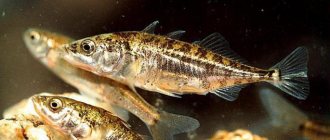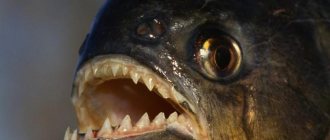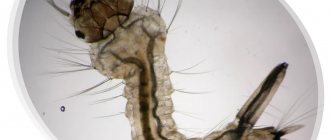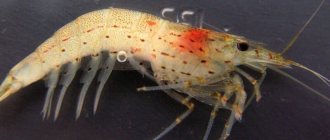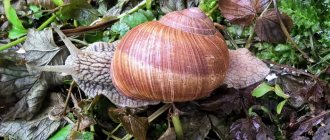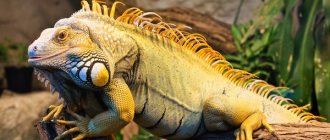Live daphnia are crustacean organisms that are widely used in the aquarium hobby as food for fry and adult pets. Under natural conditions, the daphnia crustacean lives in natural reservoirs, but recently it has become possible to breed daphnia at home. The most popular species in the aquarium hobby is Daphnia moina, the breeding of which is simple and easy. Before learning about the features of growing crustaceans in an aquarium, you should find out what to feed daphnia and how these organisms reproduce.
Description, structure, lifestyle and natural habitat
Daphnia belongs to the genus of planktonic crustaceans and is a cladoceran organism. The second name, Water Flea, was given due to its structure reminiscent of these insects and the ability to make sharp leaps in the water column. If you look under a microscope, you can make the following description of the appearance:
- a rounded body 2-6 mm long is enclosed in a bivalve shell made of transparent chitin;
- there are branched antennae on the head that help jumps in the water;
- There is only one compound eye in mature individuals, but there is an additional ocellus near it;
- in the front of the head there is a beak-shaped growth called a rostum, and under it there are antennae with olfactory bristles;
- 4-6 pairs of thoracic legs are covered with many setae and contain gill sacs intended for breathing and absorption of food;
- in the posterior part of the body there is a tail equipped with paired claws and an anus to cleanse the body of large foreign particles;
- Eggs form in a sac-like outgrowth on the back.
Photo gallery of Daphnia:
The size and color of Daphnia depend on its subtype and habitat. Thus, in spacious, clean reservoirs with a sufficient amount of oxygen and nutrients, light gray or greenish individuals live, and in small and polluted ponds they acquire a red-brown pigment.
The internal structure has the following characteristics:
- the brain and the nerve chain in the peritoneum are responsible for the nervous system;
- striated muscles help move the antennae, tail and thoracic legs;
- the digestive system consists of the mouth, small and middle intestines, 2 hepatic outgrowths and the hindgut with the anus;
- closer to the back is the heart, from which 2 ostia filled with blood arise;
- the respiratory organ is not expressed, oxygen enters the body through the membrane and from the growths of the legs;
- on both sides of the intestine there is a pair of ovaries in females or testes in males.
Daphnia live in freshwater bodies of standing water. They are distributed everywhere, including the lakes of Antarctica. For successful reproduction, they only need a clean environment with a minimum amount of silt and dirt at the bottom. Otherwise, there is a risk of accumulation of clogging substances in the intestines of crayfish, which leads to their death.
In the water column they exist as plankton, freely drifting with the current. They hide at the bottom when the sun shines too brightly, and the rest of the time they swim at the top. Life expectancy in a favorable environment is 22 days, and in a large individual it reaches 110-150 days.
When life is impossible
I would never reproduce the experiments of the Scottish physiologist John Scott Haldane (1860–1936) to study the toxic effects of various gases on the human body. He turned his body into a laboratory: he inhaled chlorine, methane, carbon dioxide and carbon monoxide, pure oxygen and nitrogen, mustard gas, each time noting what effect this or that substance had on the body. Sometimes it was about quantities dangerous not only to the health, but also to the life of the researcher; however, fortunately, he managed not to repeat the fate of Karl Scheele, who tasted prussic acid.
One of Haldane's recommendations for safe working in mines was the use of canaries as mine gas detectors - a small bird needs less gas to kill. She is poisoned faster than the average miner, who, seeing that the bird has stopped singing, will have time to evacuate from the mine before the gases underground become dangerous for him. Nowadays, birds are no longer poisoned in mines, but carbon monoxide detectors in mines are still called “canaries.” And we can consider canaries to be the first bioindicators—organisms whose behavior allowed humans to assess the environmental situation.
In addition to canaries, domestic cats involuntarily became such carbon monoxide sensors, which, after inhaling carbon monoxide, began to behave inappropriately. Saying “Why are you running around like crazy?” once sounded a little different: “Why are you rushing around like a mad cat?” In the 1950s, cats in the Japanese city of Minamata again tried to warn their owners about the impending danger. Residents of the city began to notice that local cats were behaving strangely - they could not move from point A
to point
B
in a straight line, but moved in some unpredictable jumps. Then some people began to move in a similar way. The cause of "dancing cat fever" was found to be the presence of methylmercury in the wastewater of a local chemical plant. Organomercury accumulated in the fish and shellfish that humans and cats ate, and, again due to their smaller mass, the animals experienced symptoms of mercury poisoning earlier. Acute mercury poisoning, which after these cases became known as “Minamata disease,” affected several thousand people, but if doctors and chemists had not linked together the abnormal behavior of cats and people, the consequences could have been much more severe.
Dozens of species of animals, plants, and fungi have been used as sensors that monitor the state of the environment. In fact, any species is suitable for this role. Chemists, ecologists and biologists obtain similar information from polar bears, bald eagles and dolphins. However, these representatives of the fauna are inconvenient to use for studies devoted to a comprehensive study of the environment, and therefore it is difficult to call them “biosensors”.
Those species that researchers tend to consider living sensors must have fairly simple metabolisms; if they are not found in wildlife, then their breeding should not be difficult or expensive; and most importantly, they must provide a predictable and measurable response to environmental changes. On land, these requirements are met by lichens growing on rocks and trees, and herd animals such as deer. In fresh water these are tiny daphnia and salmon fish, in coastal sea and ocean waters - mussels, and in the open sea - seagulls and marine mammals.
A good example of how birds respond to changes in environmental conditions is the story of DDT. Thus, the populations of bald eagles and many other birds in the United States declined during the active use of DDT, but after the use of this substance was banned in the United States in 1972, bird numbers began to grow again. Thus, counting the number of certain biological species allows us to track the sources of substances that pollute the environment, the paths of their movement and distribution in the biosphere, as well as their final fate. All this information is critically needed to solve environmental problems, both current and, possibly, future ones.
Live sensors also provide information on other persistent pollutants - polychlorinated biphenyls, polycyclic aromatic hydrocarbons, brominated flame retardants and organofluorine compounds. Also, the study of biological species shows the influence of heavy metals on the biosphere, primarily lead, cadmium and mercury. Biological indicators give us the opportunity to observe not only environmental pollution, but also the human impact on the cycle of nitrogen and phosphorus in nature, as well as changes in ecological systems associated with climate change and the penetration of alien biological species into ecological systems.
Of course, living sensors do not replace the traditional chemical-ecological system of sampling and laboratory analysis. There are long-term campaigns for chemical analysis and monitoring of pollutants in air, water, soil and ice samples. Such studies make it possible to determine what pollutants are present in the environment, in what quantity and where they came from, how far they were able to move from the source of pollution, and how quickly their concentration in the environment decreases. Bioindicators also provide insight into changes in environmental pollutant concentrations plus additional information about how pollutants affect ecosystems. New technologies are expanding the use of live sensors—for example, environmentalists are now sending drones to take samples from whales' fountains to see if all is well with these giant mammals.
An important element of modern bioindication is interaction with evolutionary and functional ecological genomics. For a long time, two species about which detailed information has been collected have been used in biomedical research: Drosophila and the nematode Caenorhabditis elegans
.
However, rapid progress in genomics has allowed evolutionary biologists, ecologists and toxicologists to expand their research to other species. For example, it is now possible to study how the symbiotic relationships of viruses, bacteria and fungi with plants and animals, including Homo sapiens
, affect biological diversity and how, on the other hand, human activities influence these symbiotic relationships. Research of this kind helps to understand how genomes respond to environmental changes. The fact is that even for the most well-studied genomes, it is unknown what function is performed by about a third of the genes that were not expressed in laboratory conditions. Experts believe that it is time to use new approaches: to find out how environmental conditions affect genes with unknown function.
Next we will talk about some species that help us study the state of the environment.
Value and Benefits
Daphnia is grown along with Bloodworm, Gammarus, Caddisfly, Amphipod, Cyclops, Prudovik and other food organisms. In terms of calorie content, they are all approximately equal, but the first has a higher protein content. Amino acids absorbed by young fish have a beneficial effect on their growth and development. Because of this, Daphnia is used commercially and added to many dry foods. In this form, 50% of their mass consists of proteins.
Live food is of particular importance in the diet of fish. It minimizes their incidence, is easier to digest during illness and facilitates adaptation to new conditions.
Crustaceans usually have a stomach filled with plant particles, so they are preferred as food by Guppies, Danios, Fire Barbs, Crucians, Carps and other aquatic inhabitants. In an aquarium, such nutrition is especially useful for fish deprived of a natural diet. The chitin shell, which is not digested, activates the intestines and starts its cleansing.
Moreover, they are unpretentious in care and multiply quite quickly. They benefit the entire aquarium by filtering the water in it. One individual eats 6 times more food per day than it weighs. This helps get rid of foreign microorganisms in a pond or tank.
Using the wrong container
You can use any containers for growing daphnia, but the best ones are wide and not tall. In such systems, the area of water that comes into contact with air is larger, and accordingly, gas exchange occurs more intensely. In low containers, food is eaten better and it is more convenient to control the crop.
Daphnia concentrates more near the surface, reacting to light. In shallow containers, the crustacean is distributed throughout the entire volume. In deep ones, only at the surface, 30-40 cm deep, respectively, the volume below 30 cm is not used effectively.
container for breeding daphnia
Species of Daphnia
Their genus includes more than one hundred species of cladocerans, which belong to approximately 10 families. In Russia you can find three varieties:
- Magna is considered the largest, reaching a length of 6 mm in the female, 2 mm in the male and 0.7 in the larva. It matures in 12-14 days and gives birth in 2 weeks, laying an average of 20-30 and up to 80 eggs (ephippia) at a time. Lives approximately 110-150 days.
- Pulex is medium in size, the female grows up to 3-4 mm, and the male no more than 1-2 mm. It reproduces every 3-5 days, producing 10-25 eggs. The life cycle is 26-47 days.
- Moina is the smallest, has a soft shell and is suitable for feeding fry. It grows no more than 1.5 mm, and newborns are 0.5 mm. Maturation occurs within a day, and litters appear every 1-2 days, up to 53 ephippia each. Lives for approximately 22 days.
How to eat
They feed on blue-green bacteria and yeast. The largest number of individuals can be found in a reservoir where the water is blooming and where there are few fish.
Single-celled organisms filter water. The food that has been filtered enters the digestive organ and then moves along the esophagus. With its lips, with the help of salivary glands, the crustacean glues food into a ball. It is filtered from 2 to 10 ml per day. In case of cold weather, daphnia may hibernate. She can survive without food for a day, since there is always plant food in her stomach. In times of hunger, it feeds on the remains of dead plant food and the remains of invertebrate animals.
Daphnia in the aquarium
To breed crustaceans in closed tanks, you must provide certain conditions for their existence:
- choose a clean container made of glass or plexiglass, initially with a capacity of 1-3 liters, replacing it as the number of inhabitants increases, taking into account a density of 0.3-1 kg/m³;
- use purified water or from the tap, with a hardness of 6-18° and a neutral pH of 7.2-8, without chlorine and chemical impurities, for which it can be filtered;
- place it away from direct sunlight, as crustaceans do not like excessive light;
- install a 20 W fluorescent lamp, providing light lighting for 14-16 hours every day;
- provide temperatures within +20…+24 °C for Daphnia vulgaris and +26…+28 °C for Moin; in a cool habitat the reproduction rate will decrease;
- provide complete nutrition by dissolving the fertilizer in the liquid until it becomes slightly cloudy, and adding a new portion after clearing;
- as necessary, clean and change the water so that debris and silt do not accumulate at the bottom, as well as plaque on the walls;
- use weak aeration to remove film on the surface, mix food, provide oxygen access of at least 3-8 mg/l and oxidation 14.8-26.2 mg O2/l.
First, you should purchase crustacean eggs and place them in a prepared container. Already matured individuals need to be caught with a net in order to immediately be fed, dried or frozen.
Aeration equipment
In order to grow river crustaceans, the tank is equipped with aeration equipment. Aeration is required if Daphnia moina is grown at home.
With the help of such devices, the aquarium liquid is saturated with oxygen, which has a positive effect on the development of phytoplankton. Oxygen prevents film development.
Aeration equipment is selected for the aquarium, which has average performance. After all, an excessive number of bubbles provokes the rise of daphnia to the surface of the water.
Nutrition of Daphnia
In nature, Water Fleas feed on simple microorganisms:
- blue-green algae from unicellular organisms;
- ciliates;
- fungal spores;
- bacteria;
- detritus (remains of invertebrate animals).
A suitable environment is created in ponds with a small number of fish and a large number of phytoplankton, which creates the effect of a bloom in the water column. In artificial tanks, crustaceans should be fed with the following products:
- The bacteria are obtained from banana peels, food waste or excrement. To do this, they should be soaked in water for up to a week until it begins to become cloudy. Add the resulting liquid to the tank, 450 ml per 20 liters, every 5-6 days.
- Microscopic algae and other plankton will remove excess contaminants and serve as food for Water Fleas. To obtain them, you should scoop up the liquid from the stocked aquarium and place it in a sunny, warm place at +18...+25 °C.
- Yeast can be dried or raw, frozen to a rich color. Dilute in water at +35 °C at the rate of 1-3 g per 1 liter. They should be used 2-3 times a week, in combination, as they have less nutritional value.
- Beetroot, cabbage or carrot juice will serve as a vitamin supplement. You need to add 1 tsp to the container. for 5 liters of volume.
- Dry the elodea, nettle or lettuce, chop it, grind it in gauze, and add it to a container of water. When it turns green, introduce crustaceans there. Repeat every 10-15 days.
- A couple of times a week you can add ammonium nitrate at 1 g/100 l, phosphorus salts up to 5 mg/l, or other mineral fertilizers.
- Stale blood or water remaining from washing fresh meat (1.5-2 cm3/l), blood or meat and bone meal (0.5-2.5 cm3 per 10 l), manure (1.5 kg/m3).
During the feeding process, crustaceans create a current by raking with their chest paws. It is on them that the organs that send microelements to the esophagus are located. Inside there are organs that produce a sticky substance that collects individual food particles into clumps. Inside the esophagus, they go through all stages of digestion and only large excesses come out.
Water parameters
For successful breeding of Daphnia moina, certain fluid parameters are required:
- Presence of salt. Since these phenotypes naturally live in freshwater, the aquarium should be filled with the appropriate liquid.
- Oxygen. Crustaceans live in water in which the degree of oxygen varies. Constant aeration has a negative effect on the development of crustaceans. In such conditions they reproduce less well.
- Acidity. It is maintained at the level of 7–8 units.
- Temperature. The temperature level suitable for cultivation varies in the range of 18–22 degrees.
Catching Daphnia
Water fleas can be collected independently from small lakes, ponds with waterfowl, pits, ditches and other bodies of water with minimal aquatic life. They do not breed in river conditions, but only in standing water. They are quite easy to detect by coloring the thickness in a gray-green or brownish tint.
You should not look for them in heavily dammed reservoirs or lakes with many fish and predators. The presence of the latter will affect not only the quantity of plankton, but also its quality, and will also increase the risk of the spread of diseases to aquarium fish.
To catch bioplankton, you need to take a fine-mesh net or muslin sieve. The scooping motion should follow a figure eight shape and be slow. Rapid scooping leads to increased pressure on the crustaceans and to their death.
The best time for this is during the period of water bloom, when the concentration of algae in it increases. Moreover, it is easier to do this in a shaded area of shallow water, in the evening or on a cloudy day. After all, the attitude of crustaceans to bright sunlight is negative; under them, plankton-like creatures tend to go deeper closer to the bottom.
Natural reproduction and breeding of Daphnia
Water fleas are not asexual creatures, as evidenced by the presence of ovaries in females and testes in males. They also differ in the size and structure of the antennae. But in them, like all cladocerans, reproduction occurs through cyclic parthenogenesis. Same-sex reproduction is especially important when only female individuals remain in the population. Moreover, in warm summer weather, young females develop from their unfertilized eggs. In autumn and when water bodies dry up, males emerge from such ephippia. Their embryos are born under the shell and wait several molts before emerging.
How does it reproduce
They have an amazing ability to reproduce. Daphnia breed offspring without fertilization. The female has a brood chamber on her body. If conditions are favorable, the adult female lays from 10 to 50 eggs. They then develop in the brood chamber. After three days, the breeding cycle repeats. The water of the reservoir turns red when it is teeming with a huge number of crustaceans. In autumn, the breeding process takes place with the participation of males. With their help, the egg shell becomes denser and able to withstand cold temperatures. With the onset of warm weather, the breeding cycle repeats.
Danger to humans
Because of their association with insects, many people believe that Water Fleas bite. But they do not have the corresponding organs, which means that such bites are excluded. Daphnia can cause harm only by causing an allergic reaction in people predisposed to it. As they absorb food, they also accumulate dangerous pollen, the concentration of which increases in dried organisms.
According to statistics, crustaceans cause allergies in almost every fourth person. It manifests itself in the following symptoms:
- itchy skin rashes, like hives;
- dryness and congestion of the nasal sinuses, runny nose;
- frequent involuntary sneezing;
- allergic conjunctivitis with tearing;
- difficulty breathing due to bronchospasm;
- bronchial asthma.
To diagnose the condition, doctors analyze a skin test. In case of positive results, antihistamines are prescribed and contact with Daphnia is avoided.

